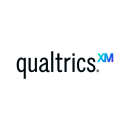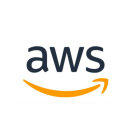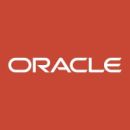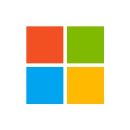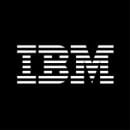It’s unclear when plain old “data” became “big data.” The latter term probably originated in 1990s Silicon Valley pitch meetings and lunch rooms. What’s easier to pinpoint is how data has exploded in the 21st century — by 2025, according to one estimate, humans will produce 463 exabytes of data per day — and how it’s accounted for the rise in use of big data platforms.
Big Data Platforms To Know
- Microsoft Azure
- Cloudera
- Sisense
- Collibra
- Tableau
- Qualtrics
- Oracle
- MongoDB
- Datameer
What Is a Big Data Platform?
Because the persistent gush of data from numerous sources is only growing more intense, lots of sophisticated and highly scalable cloud data platforms have popped up to store and parse the ever expanding mass of information. These types of platforms have come to be known as big data platforms.
What Is a Big Data Platform?
A big data platform works to wrangle this amount of information, storing it in a manner that is organized and understandable enough to extract useful insights. Big data platforms utilize a combination of data management hardware and software tools to aggregate data on a massive scale, usually onto the cloud.
Benefits of Big Data Platforms
How does Netflix or Spotify know exactly what you want to stream next? This is due in a large part to big data platforms working behind the scenes.
Understanding big data has become an asset in nearly every industry, ranging from healthcare to retail and beyond. Companies increasingly rely on these platforms to collect loads of data and turn them into categorized, actionable business decisions. This helps firms get a better view of their customers, target audiences, discover new markets and make predictions about future steps.
Using enterprise data platforms not only provides a strong business advantage, but is almost paramount for keeping up with consumers, competing brands and ever-changing trends.
Features of Big Data Platforms
What makes big data platforms ideal to handle sizeable sets of data is the technology’s inherent flexible features. A must-have for these types of platforms is being able to accommodate for the core attributes of big data — volume, velocity and variety.
As such, big data platform features tend to involve the abilities to be scalable, quick and equipped with built-in analysis tools to account for the information at hand. For even more efficiency, some of the best big data platforms include features for accommodating large sets of streaming or at-rest data, converting data between multiple data formats and attaching new applications at any necessary point.
These big data platforms in particular make petabytes of data feel manageable for users and businesses everyday.
Big Data Platforms to Know
Rooted in Apache’s Hadoop, Cloudera can handle massive amounts of data. Clients routinely store more than 50 petabytes in Cloudera’s Data Warehouse, which can manage data including machine logs, text, and more. Meanwhile, Cloudera’s DataFlow — previously Hortonworks’ DataFlow — analyzes and prioritizes data in real time.
Qualtrics’ experience management platform lets companies assess the key experiences that define their brand: customer experience; employee experience; product experience; design experience; and the brand experience, defined by marketing and brand awareness. Its analytics tools turn data on employee satisfaction, marketing campaign impact and more into actionable predictions rooted in machine learning and AI.
Though it’s possible to code within Datameer’s platform, it’s not necessary. Users can upload structured and unstructured data directly from many data sources by following a simple wizard. From there, the point-and-click data cleansing and built-in library of more than 270 functions — like chronological organization and custom binning —make it easy to drill into data even if users don’t have a computer science background.
Snowflake is a data warehouse used for storage, processing and analysis. It runs completely atop the public cloud infrastructures — Amazon Web Services, Google Cloud Platform and Microsoft Azure — and combines with a new SQL query engine. Built like a SaaS product, everything about its architecture is deployed and managed on the cloud.
HG Insights offers a market intelligence solution that equips businesses with actionable insights from market data and scale targets. Its platform sizes and analyzes market data to find trends and threats relevant to a particular business. From there, business owners can apply those insights to product, sales and marketing initiatives.
Kalderos develops solutions to support compliant drug discount programs. Its healthtech platform consolidates data from multiple sources to identify and resolve noncompliance while improving stakeholder transparency and collaboration. Kalderos’ goal is to promote trust and equity in the healthcare sector.
AnthologyAI built the first Open Data platform, which is distinguished by allowing users to own, manage and profit from their own data. This platform, which is known as a two-sided data platform, is the first to enable users to monetize their personal data as it is used and accessed by corporate data purchasers.
This platform from Zeta Global uses its database of billions of permission-based profiles to help users optimize their omnichannel marketing efforts. The platform’s AI features sift through the diverse data, helping marketers target key demographics and attract new customers.
Domo’s big data platform draws on clients’ full data portfolios to offer industry-specific findings and AI-based predictions. Even when relevant data sprawls across multiple cloud servers and hard drives, Domo clients can gather it all in one place with Magic ETL, a drag-and-drop tool that streamlines the integration process.
Best known as AWS, Amazon’s cloud-based platform comes with analytics tools that are designed for everything from data prep and warehousing to SQL queries and data lake design. All the resources scale with your data as it grows in a secure cloud-based environment. Features include customizable encryption and the option of a virtual private cloud.
Alteryx’s designers built the company’s eponymous platform with simplicity and interdepartmental collaboration in mind. Its interlocking tools allow users to create repeatable data workflows — stripping busywork from the data prep and analysis process — and deploy R and Python code within the platform for quicker predictive analytics.
Data observability company Monte Carlo offers an end-to-end platform for preventing, detecting and resolving data downtime. It provides metrics that assess and describe the health and quality of companies’ data assets, helping companies recognize areas of concern, determine the severity of those issues and enable engineers to efficiently resolve them.
DataGrail works to simplify, automate and scale data privacy programs. Its platform integrates with over one thousand apps to organize company data. Its goal is to save companies the hassle of executing lengthy and complex manual processes regarding updated privacy laws. DataGrail’s offerings include continuous data mapping, data subject request automation and unified preference management.
Spokeo is a people search engine containing more than 12 billion records from thousands of data sources. The platform’s reports include contact information, location history, photos, social media accounts, family members, court records work information and more. Spokeo works to connect friends and families and prevent fraud.
Sisense’s data analytics platform processes data swiftly thanks to its signature In-Chip Technology. The interface also lets clients build, use and embed custom dashboards and analytics apps. And with its AI technology and built-in machine learning models, Sisense enables clients to identify future business opportunities.
Google Cloud offers lots of big data management tools, each with its own specialty. BigQuery warehouses petabytes of data in an easily queried format. Dataflow analyzes ongoing data streams and batches of historical data side by side. With Google Data Studio, clients can turn varied data into custom graphics.
The Tableau platform — available on-premises or in the cloud — allows users to find correlations, trends and unexpected interdependences between data sets. The Data Management add-on further enhances the platform, allowing for more granular data cataloging and the tracking of data lineage.
Enigma is a data platform for business intelligence. It takes data on small and medium-sized businesses from hundreds of varied sources and uses machine learning and AI to sift through it, returning a concise and accurate picture of the business’ health and status. Its data insights cover things like identity and firmographic attributes, merchant transaction signals, contractor licenses, SBA loans and WARN filings.
MongoDB doesn’t force data into spreadsheets. Instead, its cloud-based platforms store data as flexible JSON documents — in other words, as digital objects that can be arranged in a variety of ways, even nested inside each other. Designed for app developers, the platforms offer of-the-moment search functionality. For example, users can search their data for geotags and graphs as well as text phrases.
Oracle Cloud’s big data platform can automatically migrate diverse data formats to cloud servers, purportedly with no downtime. The platform can also operate on-premise and in hybrid settings, enriching and transforming data whether it’s streaming in real time or stored in a centralized repository, also known as a data lake. A free tier of the platform is also available.
Starburst’s data lakehouse platform is designed to unify data sources and streamline data access to support AI strategies and analytics applications with real-time capabilities. Its customers can take advantage of 24/7 support and a library of documentation to help them get the most out of Starburst’s solutions.
Immuta provides clients in areas like tech, healthcare and financial services with a data security platform. It can manage cloud data protection via identification and classification of sensitive data. The company helps users build a “Data Marketplace” with it, in order to publish data assets.
EDGE offers a data analysis platform for bank transaction data, which it uses to assess consumer credit risk. It helps stakeholders like lenders and financial institutions gain insight from granular transaction data. The company aims to give its clients a more accurate, unbiased and nuanced assessment of creditworthiness as compared to traditional credit reporting.
Users can analyze data stored on Microsoft’s Cloud platform, Azure, with a broad spectrum of open-source Apache technologies, including Hadoop and Spark. Azure also features a native analytics tool, HDInsight, that streamlines data cluster analysis and integrates seamlessly with Azure’s other data tools.
IBM’s full-stack cloud platform comes with over 170 built-in tools, including many for customizable big data management. Users can opt for a NoSQL or SQL database, or store their data as JSON documents, among other database designs. The platform can also run in-memory analysis and integrate open-source tools like Apache Spark.
ActionIQ offers a customer data platform that powers personalized marketing campaigns. It uses AI to combine data from integration sources like transactions and social media. This allows marketers to target their audiences based on real-time behavior and web history.
Designed to accommodate the needs of banking, healthcare and other data-heavy fields, Collibra lets employees company wide find quality, relevant data. The versatile platform features semantic search, which can find more relevant results by unraveling contextual meanings and pronoun referents in search phrases.
Healthtech company eClinical Solutions specializes in data solutions for clinical trial management. Its platform brings together clinical and operational data from various sources so that life sciences organizations can improve data quality, access real-time performance insights and remain audit ready.
Fivetran facilitates automated data movement for over 8,000 companies via a platform that businesses use to access, analyze and maintain data in support of their business operations. Rather than manually building their own data pipelines, Fivetran clients can centralize data from sources like SaaS applications, on-prem databases, events and cloud platforms.


